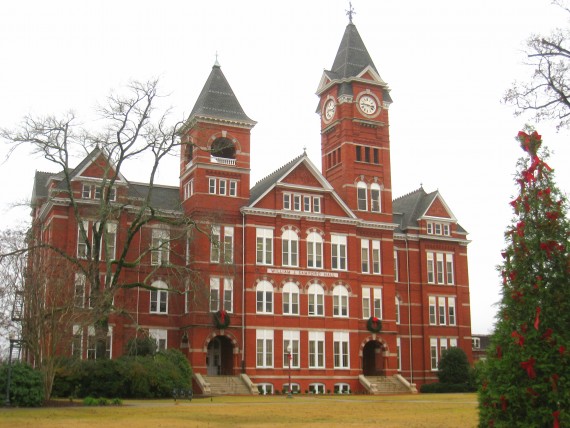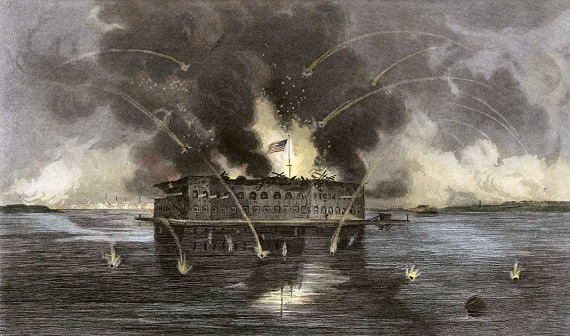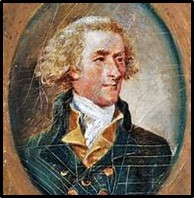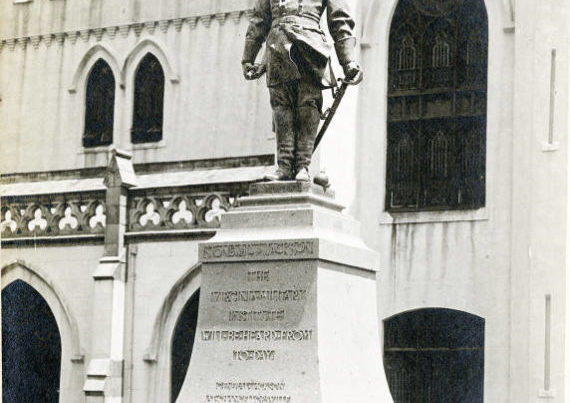Well, another year has come and gone that the Auburn Heritage Association did not invite me back to portray secessionist William F. Samford in their annual cemetery lantern tour. This year’s tour concluded last weekend, and it has been at least a decade since that fateful night when innocent young progressives were assaulted at dusk by my fire breathing interpretation of the “Penman of the Secession.” In fact, I don’t believe poor old Mr. Samford has been portrayed by anyone since that night, as he has remained suspiciously silent ever since. As an example of my highly historically accurate performance, one of my favorite parts of the evening was when I got the opportunity to refer to Abraham Lincoln as “a skunk.” I delighted in the shocked gasps that followed. Afterwards, someone asked me if perhaps I should have toned it down a little. I replied that calling him a skunk WAS toning it down, as I originally planned to call him a “canker blossom.”
My wife and I still took the tour this year anyway, and it was okay. By far, the worst part of the tour was being ear-raped by all the Yankees in our little group. Why can’t Yankees just shut up sometimes? Why can’t they learn something new without providing a constant running narrative? They have no sense of humor at all, but they’re convinced that whatever they’re thinking about is so darn clever that they must share it loudly with everyone around them at all times. But as for the tour, I was mostly curious to see if any Confederate whitewashing had occurred (other than keeping Mr. Samford buried deeply), and I was sorry to see that it had. For one thing, the Confederate battle flag that had flown over the mass grave of brave Texas volunteers had been removed. One year it was there, and the next year it was gone. Secondly, instead of having a small musical band play “Dixie,” at the Confederate grave site, this year there was a single bugler playing “Taps.”
Lastly, the actor who delivered the speech at the mass grave refused to acknowledge that the remains were of soldiers from Texas. Although EVERYBODY knows the story of how they were all from Texas and all gravely wounded during the Battle of Atlanta, and were sent westward by railroad until their train hit the spot near Auburn where the Yankees had torn up the tracks, these brave Texas volunteers were inexplicably reduced to soldiers of “unknown origin.” However, I guess in order to tell the story correctly, they would have to admit that many of those Texas soldiers didn’t actually die until they were shot by Yankee snipers as they lay defenseless on the grounds of Auburn’s campus waiting medical attention.
Some of the oldest buildings on Auburn’s campus are reported to be haunted by the ghosts of Confederate soldiers who were stationed up high in those buildings in order to keep a watch for Yankees near the train tracks. As I mentioned before, the wounded soldiers were literally laid out on the ground about two blocks from the tracks while they waited on medical attention. Since the Yankees couldn’t seem to resist shooting at the defenseless dead and dying, as well as the doctors, nurses, and volunteers, it became necessary to post sentinels on the upper floors. As the ghost stories relate, many people can still hear footsteps marching back and forth on the upper floors of those buildings late at night as the ghosts of those brave soldiers refuse to quit their posts.
As part of the cemetery tour, our guide told us the story of those ghosts. Although she left out the more gruesome (yet truthful) details, she did actually admit that Union snipers were operating near the train tracks and that the ghosts in those buildings are still keeping watch to this day. When she ended the story, I raised my hand to make a comment. The tour guide looked at me and cheerfully said, “Yes, sir?”
I said, “If those ghosts are supposed to be keeping Yankees out of Auburn, they’re doing a terrible job.”
I can’t understand why they won’t invite me back again.







